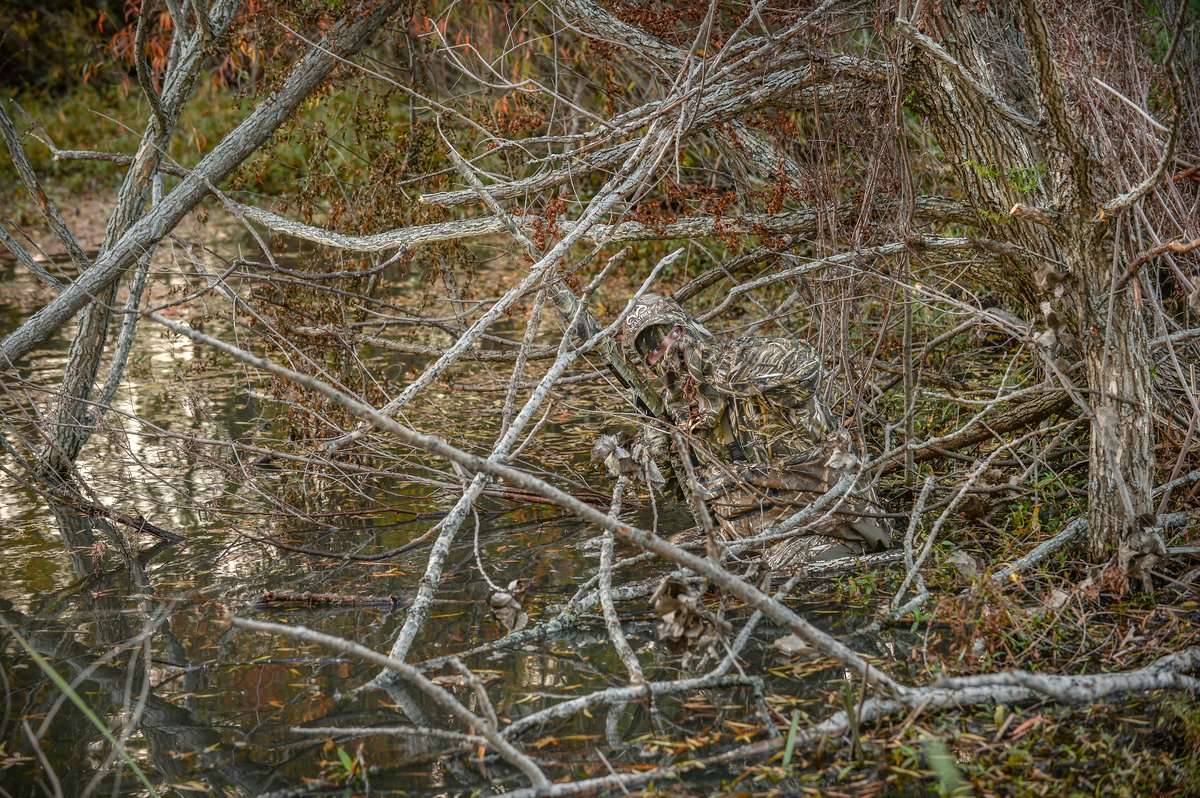Overabundant water creates hazards, spreads out ducks and geese
Date: Oct. 10
Location: northern portions of the flyway
Major Weather Trends
Early-fall cold fronts have kick-started waterfowl migrations in the upper Mississippi Flyway, but precipitation still dominates the headlines. Record rainfall in many areas has inundated the landscape, flooding fields and creating numerous temporary wetlands. And the situation won't change soon.
We had a normal August for rainfall in a lot of areas, but we had a wet spring and early summer, meaning oxbows and low areas near rivers and marshes are holding higher amounts of water on average compared to a few years ago, said Jeremy Dersham, owner of Ridge and River Running Outfitters in southern Wisconsin. This past week, things once again changed. Central Wisconsin has received inches upon inches of rain in local areas, swelling rivers and flooding bottomlands. Over the past few years, this is becoming more of the norm.
Water/Habitat Conditions
High water levels in Wisconsin have created dangerous situations on many marshes and rivers. In an Oct. 4 news release, the Wisconsin Department of Natural Resources urged waterfowlers to be cautious. Some hunters became stranded because of loose cattail mats at Horicon Marsh Wildlife Area, and wardens in other areas have responded to distress calls.
Currents are running fast in unexpected places, DNR Chief Warden Todd Schaller said in the release. Anyone heading into the water should wear a life jacket and watch for floating debris. It's important to remember to stay within your ability and equipment limits and to avoid strong current areas.
Patrick Hunt Cummings, owner of In The Face Outdoors guide service in southeastern Michigan, said high water has moved wild rice and wild celery beds on lakes Huron and St. Clair, which will make diver hunting more challenging. He said hunters will have to scout more in backwaters and inner bays.

Species and Numbers
Dersham reported finding decent numbers of typical early-season ducks, including mallards, wood ducks and blue-winged teal. He described hunting as average.
We have seen a change in wood duck behavior, he said. Areas — specifically oxbows — around smaller rivers that normally hold small amounts of water, like 1 to 2 feet, are now holding 4 to 5 feet of water, discouraging birds from regularly using them. Rather, we're seeing birds run rivers to find areas with shallower waters.
Realtree.com waterfowl contributor Joe Shead, who hunts northwestern Wisconsin and northeastern Minnesota, said hunting was slow in his area. However, a few fresh divers appeared midweek on Chequamegon Bay near Ashland, Wisconsin.
Slim pickings is the report, he said. I hunted morning and evening (this past week) and shot at two ducks. I did see about 40 or 50 ringers this afternoon. I kicked them up and then set up, but they came back too soon and then left. My friend who goes pretty much every day says it hasn't been this bad since the 1980s.
Cummings hasn't seen many ducks yet, but he's experienced great success field-hunting for honkers.
Lots of Canada geese rolling through on days with any north winds, he said. Anyone who puts miles on while scouting is shooting good numbers.
Personal Hunting Report
I haven't hunted waterfowl yet this fall, but I have a solid excuse. On Sept. 9, I blacked out while driving, and my truck struck a building. Later at the emergency room, I suffered another blackout, during which doctors say my heart stopped for seven seconds. Apparently I suffered from bradycardia, which is an abnormally low heart rate. Doctors implanted a pacemaker just below my left clavicle (my non-shooting side) to solve the issue, and I've been recovering for a month. I hope to resume hunting in mid-October. Meanwhile, I'm just happy to be here.
Boat Ramp Chatter/Upcoming Patterns/Hotspots
A mid-October front is expected to dump several inches of snow on parts of the Dakotas and Minnesota, and then send temperatures spiraling downward. That will likely move many early migrants into the upper Midwest. However, Dersham said hunters can't expect to hunt traditional spots and succeed.
We're seeing good numbers of birds now using flooded corn, bean and wheat fields, he said. The amount of time we're scouting has doubled. Lots of water means lots of options for geese and ducks to choose from. We've also seen a good push of mallards and wood ducks come through. We're expecting a good push from our calendar birds (gadwalls, pintails and greenwings) to start moving through in the weeks to come.
Cummings said duck season in his area opens this weekend, but he intends to stick with honker hunting for a while.
I'll be in the field killing geese and maybe a mallard or a wood duck, he said.
Meanwhile, Shead said he expected the weather change to improve hunting.
It's supposed to get cold this weekend, he said. Get ready.
Click here for more Realtree waterfowl hunting content. And check us out on Facebook.







